¿Te gusta y disfrutas ver mariposas en su hábitat natural? ¿Estás lleno de alegría cuando ves sus delicadas alas bajo el sol de la mañana? Puedes ver y experimentar esto en casa con tu propio jardín de mariposas. Un jardín de mariposas es un jardín diseñado y cultivado para atraer polinizadores como abejas y mariposas. Diseñar y construir un jardín de mariposas puede ser no solo una experiencia de unión para usted y su familia, sino también una actividad que nos ayude a recordar que somos parte de la naturaleza y que nuestras acciones tienen un impacto. Nuestra guía de jardín de mariposas tiene toda la información que necesita para comenzar, incluido cómo elegir una ubicación, cómo decidir qué plantas cultivar y consejos para diseñar un espacio hermoso y funcional en su propio patio trasero.
¿Qué es un jardín de mariposas?
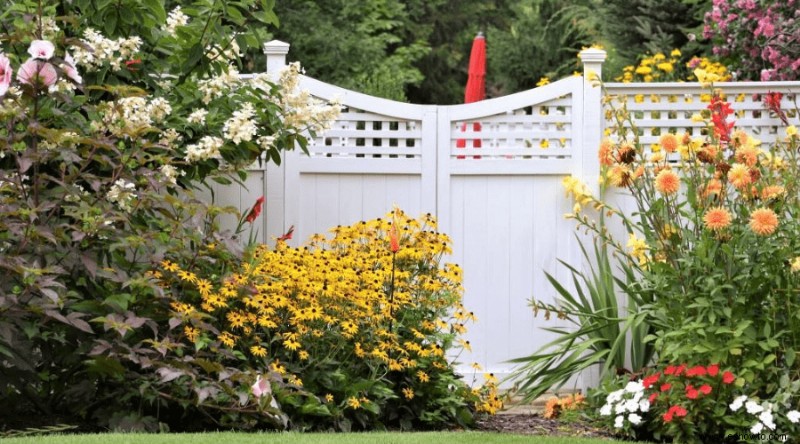
Un jardín para mariposas es un santuario plantado específicamente con el propósito de dar color a su patio trasero al plantar secciones o incluso jardineras de vegetación conocida por atraer mariposas. Según el espacio disponible, es posible que pueda plantar hileras de flores brillantes en un jardín ya existente o que pueda colocar algunas macetas decorativas en lugares llamativos alrededor de su residencia (si el espacio es limitado).
En general, un jardín de mariposas estaría lleno de flores productoras de néctar que no solo se verían como un arcoíris cobrando vida, sino que también tendrán una fragancia a juego. Estos jardines no solo son visualmente atractivos para todos, sino que también proporcionarán un refugio seguro para las mariposas a medida que avanza la temporada.
Qué necesitarás para plantar un jardín de mariposas
Al igual que con cualquier proyecto que esté dispuesto a abordar, es muy importante tener en cuenta que es posible que deba comprar algunos materiales al cultivar un jardín de mariposas.
- Tierra para macetas
- Herramientas de jardinería
- Macetas o maderos para hacer cajas de madera
- Plantas productoras de néctar de la siguiente lista
Cómo plantar un jardín de mariposas
Asegúrese de hacer una amplia investigación sobre los tipos de plantas que necesitará. Muchas flores silvestres y otras plantas perennes nativas de un lugar pueden ser invasivas en otro. También deberá saber qué mariposas hay en su región, qué plantas prefieren y si les conviene más un prado o jardín salvaje, jardineras, hileras de arbustos u otro tipo de arreglo de plantación.
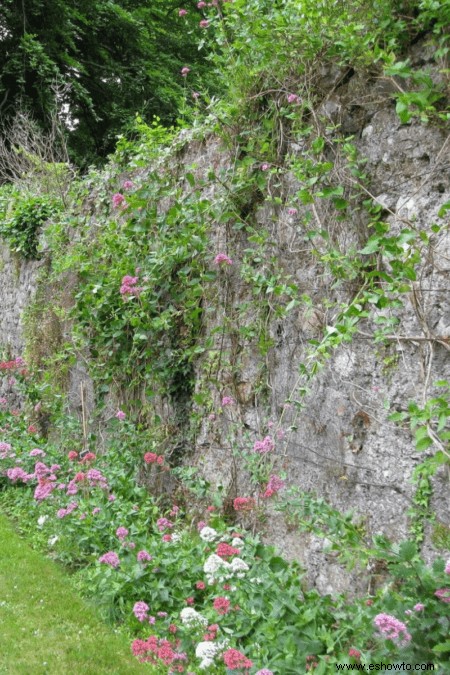
Ubicación, ubicación, ubicación
Como con cualquier jardín, la ubicación es esencial para el éxito. Hay algunos factores a considerar al determinar la ubicación de su área de mariposas:
Exposición a la luz solar durante todo el día. Las mariposas aman y prosperan bajo la luz del sol, por lo que un jardín de mariposas ubicado para aprovechar al máximo el sol de la mañana y de la tarde, junto con el tiempo intermedio, es imprescindible.
Exposición a químicos o pesticidas. Tal vez complemente sus necesidades de comestibles cada semana con vegetales cultivados en casa que se rocían con un pesticida orgánico. Si es así, no querrás exponer a las mariposas a eso, ya que su composición genética las hace incapaces de curarse del daño interno. Si vive en una calle muy transitada, no se recomienda ubicar su jardín de mariposas donde reciba mucha exposición a los gases de escape.
Exposición a los elementos. El lugar elegido en el jardín debe estar protegido de los fuertes vientos que pueden dañar las flores, proporcionando néctar y refugios seguros para las mariposas. La mayoría de los expertos en jardinería o entusiastas de las mariposas recomendarían colocar el jardín cerca de árboles o arbustos para brindar refugio a las mariposas, o plantar algunos arbustos con flores estratégicamente en todo el jardín para brindar lo mismo.
Suelo y Plantación
Las plantas y las flores necesitan cierto tipo de suelo para crecer y florecer en su región. El suelo elegido debe ser rico en nutrientes y minerales para fomentar un crecimiento saludable. Será necesario desmalezar el suelo con regularidad, ya que ciertos tipos de malezas del jardín pueden ahogar a las otras plantas al cortarles el suministro de oxígeno y agua.
Plante flores y otra vegetación en el diseño que haya elegido, asegurándose de dejar espacio para el crecimiento, deshierbe y riego. Se recomienda plantar plantas y flores en grupos de tres, para que sea fácil para las mariposas que pasan y encontrar su fuente de alimento. Coloque plantas "anfitrionas" en las afueras de su jardín para alentar a las mariposas a depositar sus larvas en un lugar seguro, lejos de los depredadores de origen humano y orgánico.
Fuente de agua para un oasis de mariposas
Como con cualquier tipo de jardín, una fuente de agua constante es una necesidad absoluta. Si sus plantas están sanas y tienen abundante agua para beber, las mariposas pueden extraer agua de las plantas para usarla para sus propios medios. Asegúrese de que su jardín se pueda regar fácilmente, ya sea a través de una manguera de jardín o un sistema de riego. No riegue demasiado las plantas, ya que esto puede ahogar las raíces, lo que hace que la planta sufra; a su vez, creando un refugio inseguro para las mariposas ya que no hay fuente de alimento o agua de las plantas.
Un área húmeda de arena o tierra mojada proporcionará a las mariposas el agua que necesitan en cada etapa de la vida, alentando a las mariposas a regresar cada año a su ubicación.
Funciones adicionales
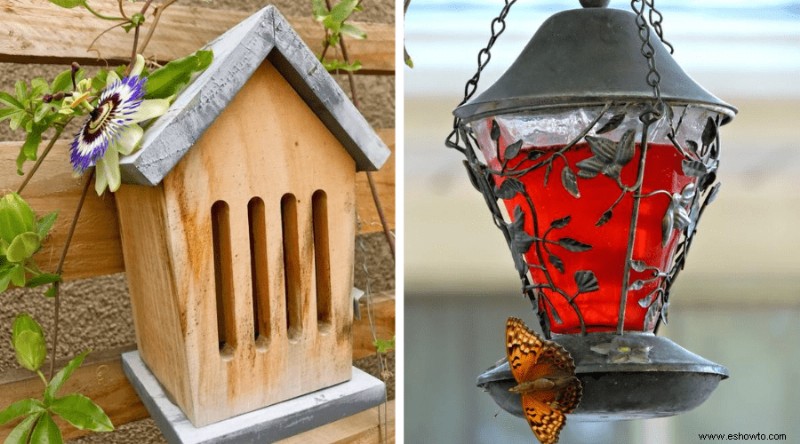
Al proporcionar a las mariposas una fuente constante de alimento y refugio de los elementos, animarás a los habitantes actuales de tu jardín a que las mariposas permanezcan en el refugio que les has proporcionado, y también atraerás a otras mariposas de diferentes variedades. Puede comprar casas de mariposas reales para su jardín y son estructuras simples que tienen aberturas ranuradas para un movimiento rápido y fácil de sus mariposas. Proporcione fuentes adicionales de néctar instalando un comedero para mariposas (disponible en su centro de jardinería o vivero local) o proporcione fuentes adicionales de agua instalando un bebedero para pájaros en el jardín. Como las mariposas no beben agua abierta, un antiguo bebedero para pájaros lleno de arena húmeda o limo puede proporcionar fuentes adicionales de agua para las mariposas visitantes.
Coloque algunas rocas planas en lugares estratégicos para proporcionar un lugar de descanso para las mariposas, especialmente por la mañana y por la noche, cuando la temperatura es más baja que al mediodía.
Plantas adecuadas para un jardín de mariposas
Así como ciertos tipos de vegetales crecen más abundantemente en ciertos climas, hay flores y arbustos particulares que atraerán mariposas a su jardín de mariposas. Butterflies are more attracted to any type of flower that is a nectar-producing variety, as this is what they use for fuel for their bodies but it also important to choose some leafy plants that provide a safe location for egg-laying butterflies. Choose plants and flowers that flourish in each growing season, and if possible, choose flowers that come back year after year for additional nectar. Most gardening sources will recommend a healthy mix of both perennial and annual flowers to not only brighten your garden but will provide a steady source of comfort and fuel for the butterflies.
In order to start your butterfly garden right, you need to consider the possible butterfly-friendly flowers that attract them and create a lovely visual – and aromatic – garden. You also need to decide which plants will grow best in your particular climate. Here are some options with the information that will help you determine if these blooming plants are right for you.
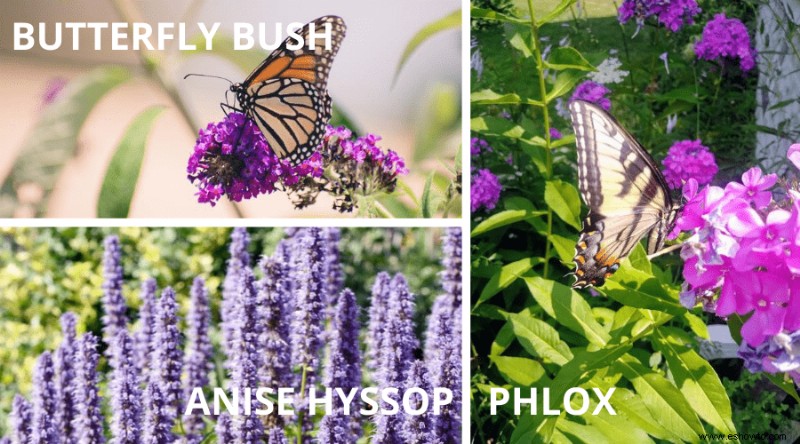
BUTTERFLY BUSH
This is a shrub that offers ease of care, and while it can grow quite large, you can easily trim it back to near ground level in winter and early spring to control growth without harming the plant.
- Scientific name – Buddleia
- Colors – shades of blue, purple, and white
- Size – up to 10 feet tall and 15 feet wide
- Growing Conditions – full sun, moist but well-drained soil
- Zones – 5 – 9 (depends on strain)
- Complementary flowers – The brilliant orange of the Mexican sunflower provides a stark contrast that is eye-catching and looks great with any and all strains of the butterfly bush.
PHLOX
This plant grows in bushes or clusters with brilliant shades that bloom all summer long. Note that phlox is quite susceptible to a disease known as powdery mildew, so you’ll want to get a variety that has been bred as resistant to this ailment.
- Scientific name – Phlox paniculata
- Colors – red, pink, salmon, lavender, and white
- Size – up to 4 feet tall and 1 foot wide
- Growing Conditions – full sun, moist but well-drained soil
- Zones – 4 – 8
- Complementary flowers – Because it works in the same zones and environment as well as compliments the beauty of phlox, consider planting it with purple coneflower.
ANISE HYSSOP
Another easy-care plant that can work wonders in your butterfly garden is anise hyssop, with its brilliant color and its resistance to extreme heat and drought. It also repels deer and rabbits, while attracting butterflies and making a great cut flower during the weeks of late summer.
- Scientific name – Agastache foeniculum
- Colors – blue
- Size – up to 5 feet tall and 2 feet wide
- Growing Conditions – full sun, moist but well-drained soil
- Zones – 4 – 10
- Complementary flowers – Consider adding some black-eyed Susan. The overall effect of blue and yellow can offer a peaceful but energetic feel.
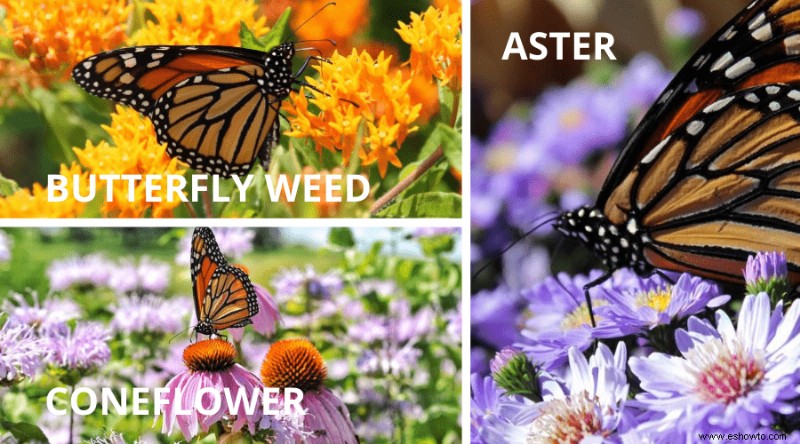
BUTTERFLY WEED
A favorite among Monarchs, butterfly weed provides nectar to the adults over the summer and food for caterpillars in the leaves. If you add other milkweeds to your garden with the weed, such as the bloodflower, you’ll get even better results.
- Scientific name – Asclepias tuberosa
- Colors – orange
- Size – up to 3 feet tall and 1 foot wide
- Growing Conditions – full sun, moist but well-drained soil
- Zones – 4 – 9
- Complementary flowers – While it has more to do with the attraction to the nectar by the butterflies than appearance, Liatris compliments butterfly weed beautifully.
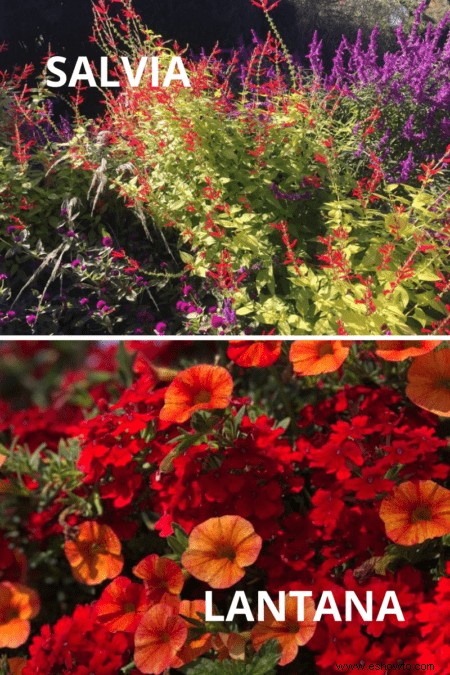
ASTER
Considered one of the best options for fall, aster is quite colorful, making it aesthetically pleasing, as well as functional. It provides dual support, supplying nectar in the fall for butterflies and the Pearl Crescent caterpillars will feast on the leaves.
- Scientific name – Aster (various varieties)
- Colors – shades of blue, purple, pink, red, and white
- Size – up to 5 feet tall and 2 feet wide
- Growing Conditions – full sun, moist but well-drained soil
- Zones – 3 – 8 (depends on strain)
- Complementary flowers – Bloody geranium will keep bloom during the summer and provide intense red foliage in the fall to make a beautiful backdrop for aster blooms.
PURPLE CONEFLOWER
The purple coneflower blooms through most of the summer, providing a nectar that many species of butterfly enjoy and making it ideal for your garden. It’s also good in high heat and drought conditions and cuts well for presentation.
- Scientific name – Echinacea (varieties)
- Colors – purple
- Size – up to 5 feet tall and 2 feet wide
- Growing Conditions – full sun, moist but well-drained soil
- Zones – 3 – 9 (depends on strain)
- Complementary flowers – Paired with anise hyssop, you can create fantastic blooms all summer long that work well together in a bouquet, while also assuring that the butterflies keep coming back for more.
SALVIA
One of the best things about salvia is the rainbow of colors in which they come. This means you have a number of options – or you can plant them all. The butterflies will flock to any strain since this is a particular favorite for the sweet nectar.
- Scientific name – Salvia “May Night”
- Colors – blue, purple, red, orange, pink
- Size – up to 3 feet tall and 1 foot wide
- Growing Conditions – full sun, moist but well-drained soil
- Zones – 4 – 9
- Complementary flowers – To add a complimentary long blooming flower, consider planting with coreopsis, which offers a bright yellow to intermingle.
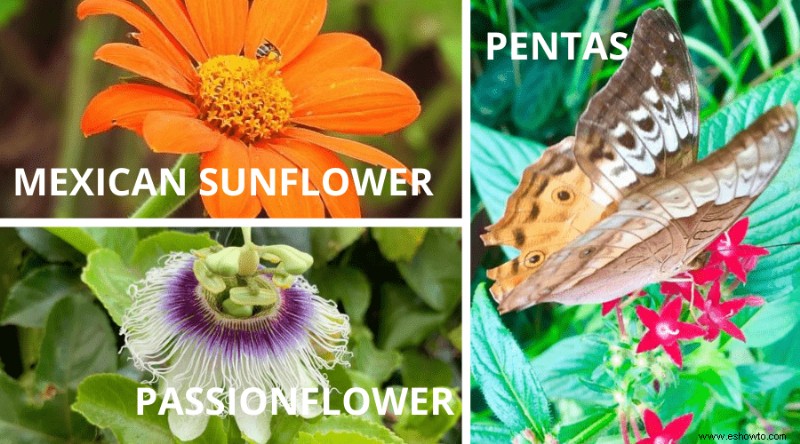
LANTANA
Lantana is an extremely versatile plant, so if you don’t have good soil and garden space, it can also thrive in containers. Butterflies love them, and they come in such a vast array of colors that you can literally get a great deal of diversity from this single plant that blooms all summer long.
- Scientific name – Lantana (varieties)
- Colors – shades of lavender, pink, red, orange, yellow, cream, and white
- Size – up to 3 feet tall and 3 feet wide
- Growing Conditions – full sun, moist but well-drained soil
- Zones – 10, though they can be annuals in cooler regions
- Complementary flowers – When paired with zinnia, lantana looks amazing and can be especially attractive to a wide variety of butterfly species.
PENTAS
Bright, star-shaped blooms and a thriving nature in any garden make pentas especially easy to grow. They thrive in hot weather and are sturdy in drought. They also attract hummingbirds, if you’re interested in more than just butterflies.
- Scientific name – Pentas (varieties)
- Colors – pink, red, and white
- Size – up to 4 feet tall and 3 feet wide
- Growing Conditions – full sun, moist but well-drained soil
- Zones – 10 – 11 (usually grown as an annual)
- Complementary flowers – Angelonia complements pentas well, and the two make an easy grow pair that lasts all summer long.
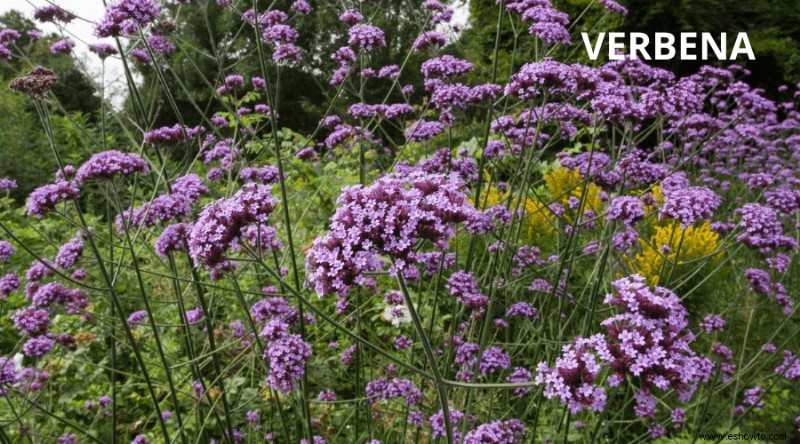
PASSIONFLOWER
If you have a taste for the exotic but not a particularly green thumb, try passionflower. They are sturdy plants that grow well on the vine and provide a favored nectar for butterflies. It’s also a host plant for several species of caterpillar.
- Scientific name – Passiflora incarnata
- Colors – blue, white
- Size – up to 10 feet (climbing vine)
- Growing Conditions – full sun, moist but well-drained soil
- Zones – 6 – 9
- Complementary flowers – Because it’s a quick growing vine, combining passionflower with the similarly quick growing vines of black-eyed Susan creates a beautiful alternating blue and yellow pattern.
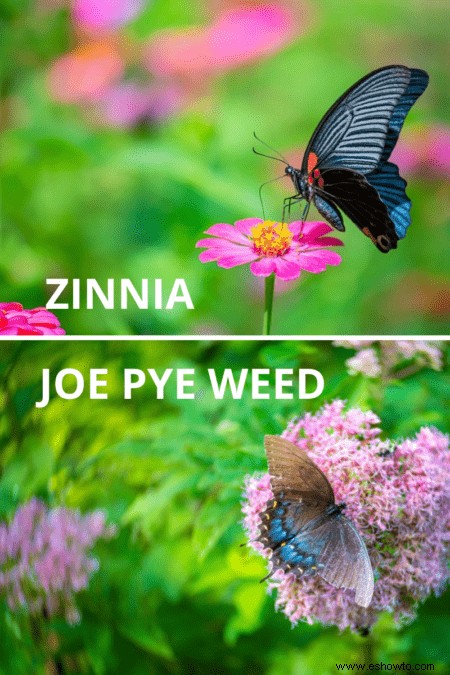
MEXICAN SUNFLOWER
For an easy to grow flower that offers size and boldness of color all summer long, try the Mexican sunflower, a particular favorite for butterflies and an addition to your butterfly garden that will literally stand out and grab attention.
- Scientific name – Tithonia rotundifolia
- Colors – orange
- Size – up to 6 feet tall and 1 foot wide
- Growing Conditions – full sun, moist but well-drained soil
- Zones – annuals anywhere
- Complementary flowers – Because they prefer the same growing conditions and make a radiant array of color, Mexican sunflowers might look best if blended with South American verbena.
SOUTH AMERICAN VERBENA
Aside from being very attractive to butterflies, South American verbena is also attractive for people – it creates a perfect cut. And interestingly enough, you’ll find that the more you cut, the more blooms grow in place of your cuttings through the summer.
- Scientific name – Verbena bonariensis
- Colors – lavender purple
- Size – up to 6 feet tall and 2 feet wide
- Growing Conditions – full sun, moist but well-drained soil
- Zones – 7 – 10 (usually grown as an annual)
- Complementary flowers – South American verbena is practically heat and drought resistant, and so is yarrow, and when grown together, the flat clusters of rainbow blooms of yarrow really make the lavender verbena stand out.
ZINNIA
Why is zinnia popular for every type of garden? They are easy to grow,
which means that cottage gardeners and even people with a planter on the front porch enjoy them. Plus, they are available in an endless rainbow of colors. Best of all, they attract butterflies all summer long.
- Scientific name – Zinnia (varieties)
- Colors – A rainbow of shades
- Size – up to 3 feet tall and 1 foot wide
- Growing Conditions – full sun, moist but well-drained soil
- Zones – grown anywhere as annuals
- Complementary flowers – With the boldness of zinnia, you should consider a ferry background such as fennel, which really gives the thick foliage appearance accenting these brilliant blooms.
JOE PYE WEED
For something a little later in the season that lasts into fall, try the tall Joe Pye weed, which also comes in shorter varieties if necessary. These flowers bloom in large clusters and are highly liked by butterflies. They also add a different texture to your butterfly garden.
- Scientific name – Eupatorium (varieties)
- Colors – dusty pink
- Size – up to 7 feet tall and 3 feet wide
- Growing Conditions – full sun, moist but well-drained soil
- Zones – 3 – 9
- Complementary flowers – To add something that butterflies can’t resist, consider planting Joe Pye weed with South American verbena. Not only is this aesthetically pleasing; it also adds up to an easy-care combination.
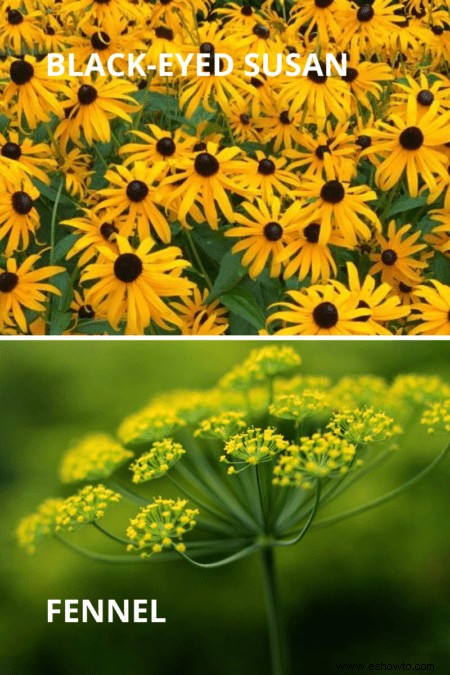
BLACK-EYED SUSAN
This particular strain of flower blooms well through the late summer and can actually get quite large. The perennial is tough and long-lasting in many climates and makes a great ground spread that butterflies adore.
- Scientific name – Rudbeckia (varieties)
- Colors – yellow and black like daisies
- Size – up to 6 feet tall and 3 feet wide
- Growing Conditions – full sun, moist but well-drained soil
- Zones – 4 – 9
- Complementary flowers – For a beautiful, velvety carpet, grow black-eyed Susans in tandem with purple coneflower, giving yourself a sense of field and prairie in your own yard.
FENNEL
Bronze fennel provides a certain ferry texture to your butterfly garden, and it’s a great way to attract swallowtail butterflies since their caterpillars love to feed on the leaves of these plants. While you should leave a few flowers to assure seeds keep the fennel growing, you should cut most flowers off as they fade to avoid fennel’s tendency to grow too aggressively.
- Scientific name –Foeniculum vulgare
- Colors – bronze and purple leaves with yellow flowers
- Size – up to 6 feet tall and 2 feet wide
- Growing Conditions – full sun, moist but well-drained soil
- Zones – 4 – 9
- Complementary flowers – Queen Anne’s lace has a similar texture to fennel but grows white flowers and green foliage that look elegant mixed with bronze fennel and attracts the same swallowtail caterpillars.\
COREOPSIS
Coreopsis holds a surprise that goes beyond its thick blooms – it’s a strong perennial that bounces back to last the whole summer if you take proper care. When clusters of blooms begin to fade, cut them back, and the resilience comes through with another round of blooms, right up until fall.
- Scientific name –Coreopsis “Moonbeam”
- Colors – yellow
- Size – up to 18 inches tall and wide
- Growing Conditions – full sun, moist but well-drained soil
- Zones – 3 – 8
- Complementary flowers – To extend the apparent life of coreopsis which starts to fade in late summer, add in some sedum, which will pick up at the end of the run of coreopsis to keep blooming strong through the fall.
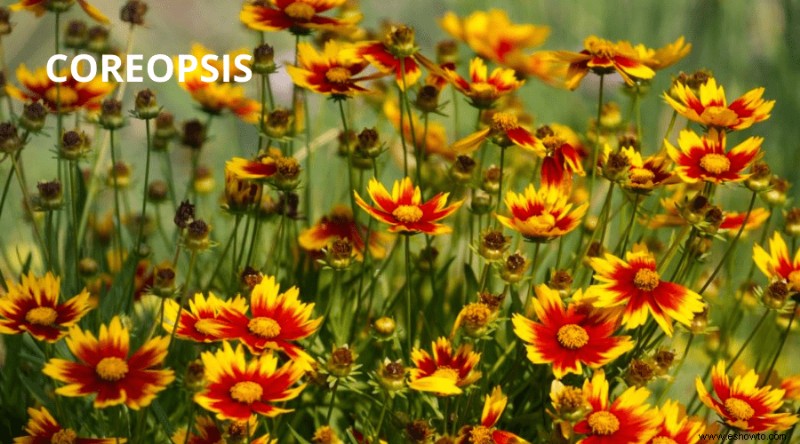
This is just a small selection of the plants and flowers that would be beneficial to your butterfly garden, but most of the plants at your local garden center or nursery should be labeled with “butterfly friendly” or something to that effect. If you are unsure what plants would grow the best in your climate, speak to an expert on plants native to your region.
Winter Garden Maintenance
When the weather turns cold and the butterflies are gone, bring in any houses, feeders, or other features for storage in a closet or shed or garage.
Most pollinator attracting flowers on this list are perennials, meaning the plants grow back year after year. To provide the best growing conditions for your garden in spring, it’s important to let the flowers go to seed (or “bolt”) in the fall, then mow or trim back the dead stalks and stems. If you’d like, you can cover the beds with straw or mulch, but this isn’t necessary unless you live in an area that drops below -30F on a regular basis in the winter.
In spring, remove the straw if you used it, inspect the space for any harmful critters, and give the soil a good dose of fish emulsion or another organic fertilizer to get things going.
Each year, with proper care, your garden will grow back a little fuller and a little differently, and butterflies will visit in greater numbers.
Conclusión
Now that you know what the wonders of a garden for butterflies would be, and how easy it would be to plant your own butterfly garden; why not take a trip to your local nursery this weekend and purchase some attractive plants to the delicately-winged creatures of the summer? Bonus reward by visiting your local nursery over a commercial retailer:you will be supporting your local gardeners and farmers plus they would be filled with the knowledge of what plants grow sturdy in your climate and what ones could fail due to the changing seasons. They may even know of plants that are attractive and will draw the butterflies of the area to your garden!
If you enjoyed this tutorial and would like to let us know what your plans are for your own butterfly garden, please feel free to comment down below! Or, if you currently have a butterfly garden and would love to offer some tips and ideas for others to improve it, let us know down below! Would love to hear from you!

